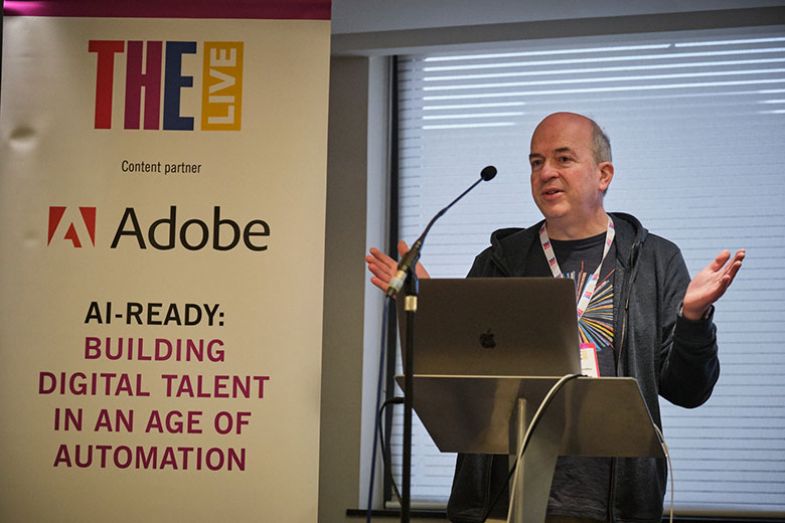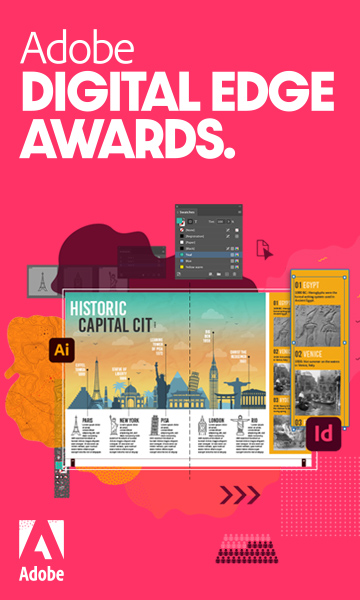
Source:
THE

The potential of AI to be creative and to further enhance teaching was addressed by industry experts at THE Live
When we talk about artificial intelligence, we often envisage a suite of robots performing tasks, transferring labour from humans to machines. Within higher education, the AI revolution has arrived in a different, inconspicuous form – but just because we do not notice it, it doesn’t mean its impact will be any less.
Sebastian Distefano, worldwide higher education development manager at Adobe, stressed this point during his presentation at the session “AI-ready: building digital talent in an age of automation”, which took place at THE Live 2019.
A passionate advocate of digital literacy and creativity in the classroom, Adobe wants to challenge the idea that creativity will be a bridge too far for AI. “What we are reading about today is that creativity is the one skill that AI is not going to be able to master – and if it does master it, it might be the very last thing it can actually do,” Mr Distefano said.
Citing the example of a Nike advertising campaign that was the result of a neural net being fed seven years’ worth of information to create a usable output, he challenged the notion that creativity is beyond the capability of AI.
However, at Adobe, AI is still regarded as a tool for facilitating creativity rather than performing it, he added. It is deployed as a technology that can execute all of the mundane tasks in the process of being creative, which in turn frees the user to focus on the act of creating. That is where Adobe’s focus has been trained.
“One of [our] themes…is that you don’t know you are using AI when you are using Adobe tools,” explained Mr Distefano. Adobe’s machine learning structure, Sensei, is used across all of its products. “Photoshop, Lightroom, Premiere Pro, Spark…there are tonnes of functionality and uses for artificial intelligence built into all of these. Most of our users won’t realise they are using an AI engine to do the thing that they are doing. And we are going to do more and more of this over the next few years.”
How this might look in practice was demonstrated by Mr Distefano using his iPhone. He opened Adobe Aero, a tool that allows users to design and share augmented reality experiences, then photographed the floor. By importing a three-dimensional image of a robot to this photograph, the conference room was rendered as an augmented reality space, inhabited by industry delegates and a turquoise robot. All Mr Distefano did was push three buttons: AI did the rest.
The implications for higher education are obvious: AI could extend the possibilities for delivering teaching. As futurist and innovation adviser Martin Hamilton (pictured) noted upon taking the stage during the session, virtual reality can be used to create learning environments that are inaccessible in the physical realm.
“Let’s say you are doing a nuclear safety course,” he said. “We want to visit Chernobyl, but not only is it ruinously expensive for a big group of people, it is also dangerous. And there are places that you can’t go to, like Palmyra. Isis, Daesh, blew up the temples at Palmyra – they don’t exist anymore. But they exist in 3D. They exist in the digital realm.”
Mr Hamilton forecast that AI might change how we think of the campus, facilitating more sophisticated and immersive distance learning. He noted that the opportunities were immense – but he also urged caution.
There are ethical concerns that universities must be aware of when using AI: data must be safeguarded and designers must be aware of users’ sentiments and values when creating student-facing systems. Diversity in design teams is critical in order to mitigate this, Mr Hamilton argued.
“Who here has an AI strategy?” he asked the audience. Just a few hands were raised. In five years’ time, might that have changed? As Mr Hamilton implied, it might well have to.
Find out more about Adobe’s solutions for higher education.
Join the THE Live mailing list here for all the latest THE Live news and exclusive offers.


























